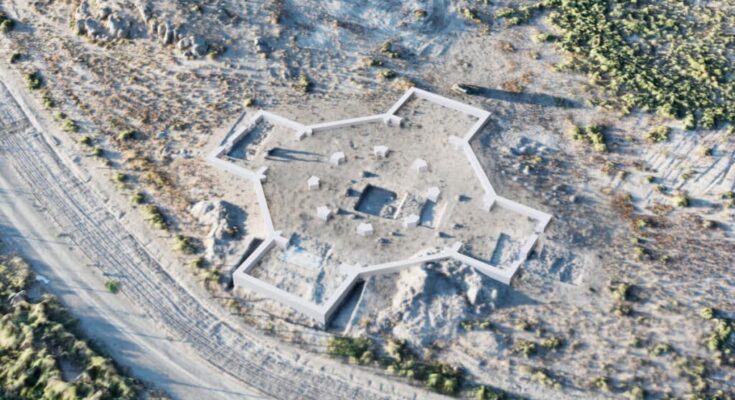
Archaeologists have discovered what is believed to be the oldest Christian church in Armenia.
The ancient church, which is octagonally-shaped with extensions extending like a cross, is thought to be over 1,600-years-old. This makes it one of the earliest Christian churches ever found.
Achim Lichtenberger, an archaeologist from the University of Münster in Germany, called the fourth-century church a remarkable find that sheds light on the history of early Christianity in Armenia.
Researchers from the University of Münster and the National Academy of Sciences of Armenia discovered the ancient church in 2023. They returned this year to further study and excavate the site. The church is located in Artaxata, an ancient city that served as Armenia’s capital for almost 600 years.
In the early fourth century, Armenia was ruled by King Tiridates III, who was educated in Rome. According to legend, around the early 300s, a saint named Gregory the Illuminator converted the king to Christianity.
In response, Tiridates made Christianity the official religion of Armenia, making it the world’s first Christian state long before the Roman Empire adopted the religion in 380 CE.
100-foot-wide octagonal church
Armenian and German archaeologists have been examining the ruins of Artaxata since 2018, with their most remarkable discovery being this ancient church. The structure, nearly 100 feet wide, features an octagonal design, laid out with basic mortar flooring and terracotta tiles.
Archaeologists have uncovered a nearly 2,000-year-old church in Armenia, making it the oldest known church in the country and one of the oldest in the world. This incredible find sheds light on early Christianity and Armenia's rich history. #Archaeology #ArmenianCulture pic.twitter.com/27djS2PVjS
— FaithonView (@FaithonView) October 21, 2024
In Christian symbolism, the octagon holds special significance, representing the eight days from Jesus’s arrival in Jerusalem to his resurrection. It also symbolizes renewal and new beginnings.
Mkrtich H. Zardaryan, a specialist from the National Academy of Sciences of Armenia, mentioned that while octagonal churches hadn’t been identified in Armenia before, they are well-known in the Eastern Mediterranean, where they first emerged in the 4th century CE.
Researchers uncovered wooden platform remains in the church’s cross-shaped extensions, dating them to around 350 CE through radiocarbon testing. Additionally, fragments of marble were found, hinting that the church had once been decorated with this luxurious stone, likely brought in from the Mediterranean.
This discovery adds to the small number of monuments representing early Christianity in Armenia. Not far from the site is the medieval Khor Virap Monastery, built in the seventh century, and about 20 miles to the north lies the Etchmiadzin Cathedral.
This UNESCO-listed cathedral, thought to be the world’s oldest, was built around the same time as the Artaxata church. However, as Lichtenberger noted in an interview, no solid archaeological evidence has yet confirmed the exact age of Etchmiadzin.



